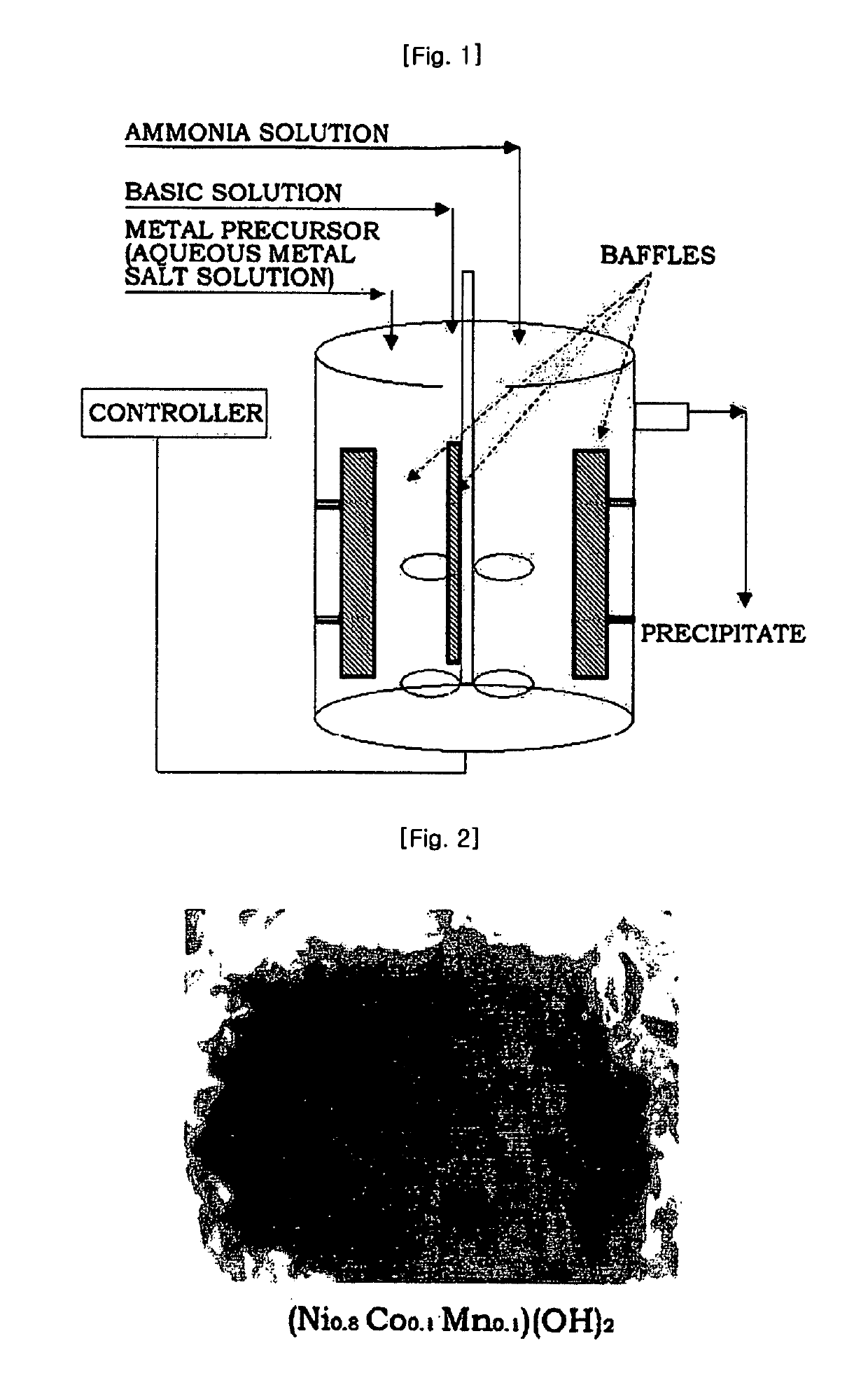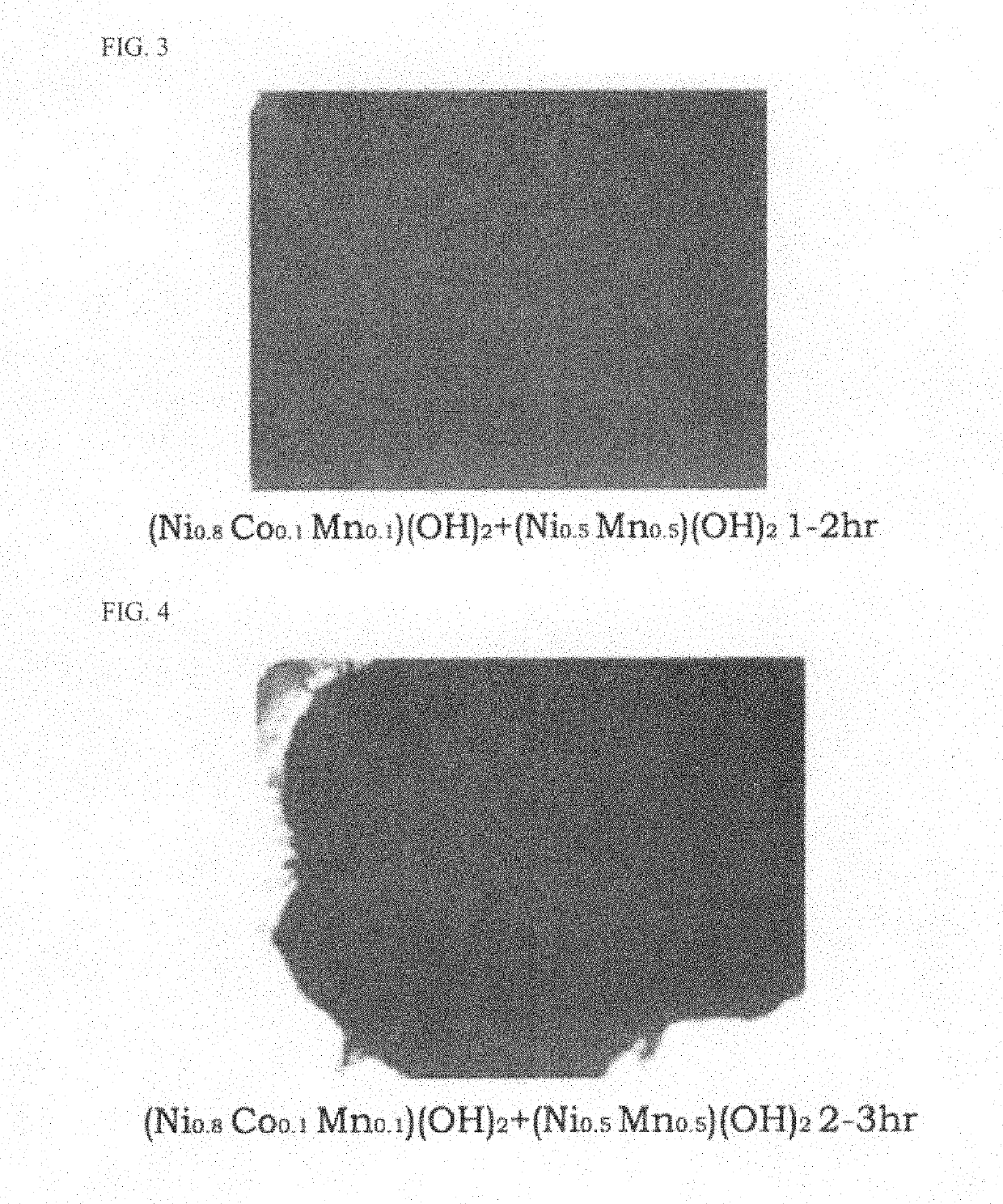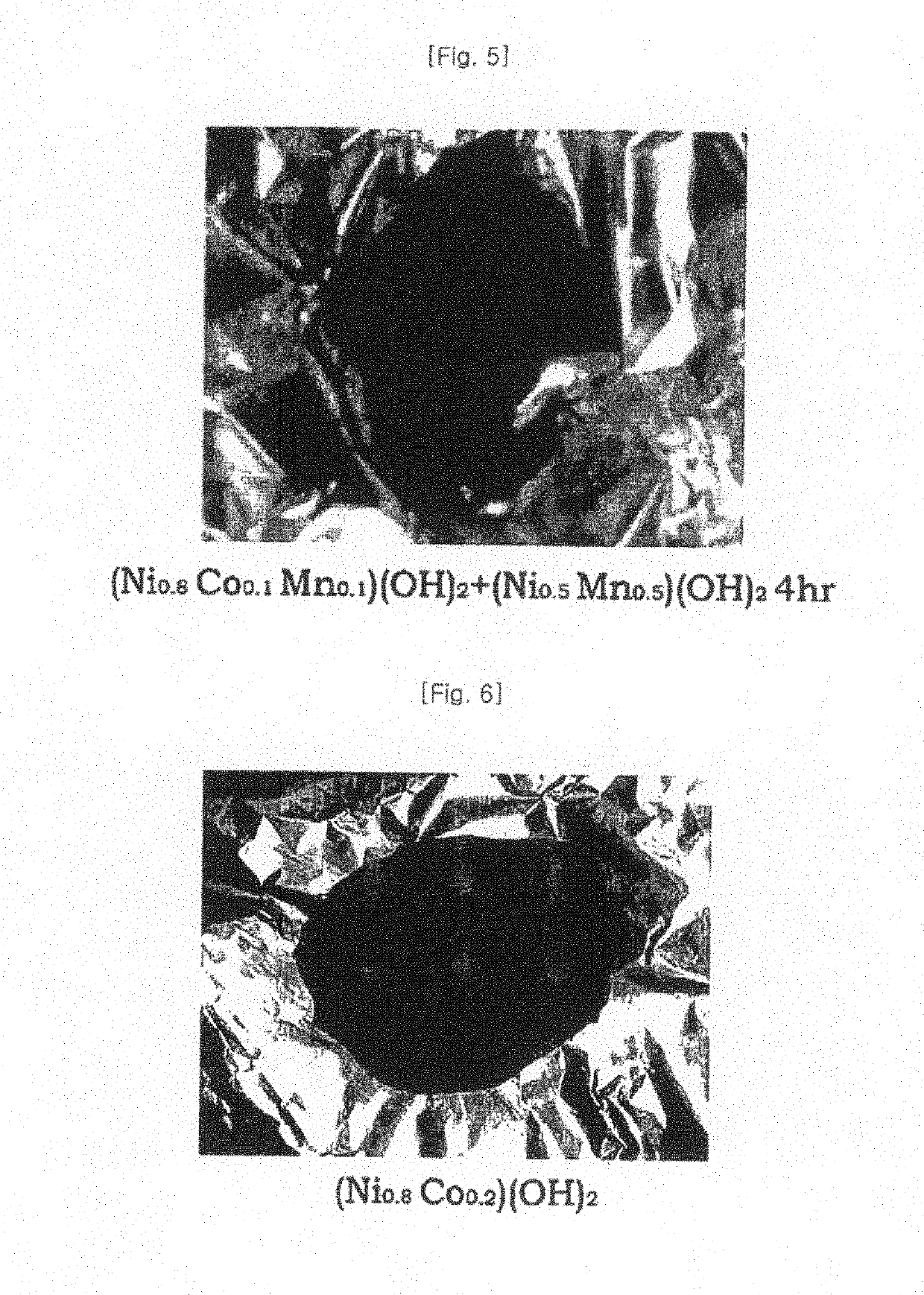Double-layer cathode active materials for lithium secondary batteries, method for preparing the active materials, and lithium secondary batteries using the active materials
a lithium secondary battery and active material technology, applied in secondary cell servicing/maintenance, cell components, nickel compounds, etc., can solve the problems of poor safety, high price and poor safety of lithium ion secondary batteries, and not have a stable crystal structure, etc., to achieve superior thermal safety, high capacity, and high capacity.
- Summary
- Abstract
- Description
- Claims
- Application Information
AI Technical Summary
Benefits of technology
Problems solved by technology
Method used
Image
Examples
example 1
[0102]Four liters of distilled water was put in a reactor (capacity: 4 L, power of rotating motor: 80 W), and then nitrogen was supplied to the reactor while bubbling at a rate of 1 liter / minute to remove dissolved oxygen. Stirring was conducted at 1,000 rpm while keeping the temperature of the reactor at 50° C.
[0103]A 2.4M aqueous metal solution containing nickel sulfate, manganese sulfate and cobalt sulfate in a molar ratio of 1.92:0.24:0.24 and a 0.2M aqueous ammonia solution were continuously fed to the reactor at rates of 0.3 and 0.03 liters / hour, respectively. A 4.8M aqueous sodium hydroxide solution was fed to the reactor to adjust the pH to 11.
[0104]At this time, the rotation speed of the impeller was set to 1,000 rpm. The flow rate was controlled so that the average residence time in the reactor was about 6 hours. After the reaction reached a steady state, the reactants were further stayed for a prolonged time to obtain a denser composite metal hydroxide.
[0105]After the fee...
example 2
[0118]Calcining was carried out at 770° C. for 20 hours to fabricate a half battery.
example 3
[0119]The double-layer composite and ammonium fluoride (NH4F) and metal hydroxide (Ox) were mixed in a molar ratio 1:0.05, and calcined at 770° C. for 20 hours to fabricate a half battery.
PUM
| Property | Measurement | Unit |
|---|---|---|
| particle diameter | aaaaa | aaaaa |
| particle diameter | aaaaa | aaaaa |
| temperature | aaaaa | aaaaa |
Abstract
Description
Claims
Application Information
 Login to View More
Login to View More - R&D
- Intellectual Property
- Life Sciences
- Materials
- Tech Scout
- Unparalleled Data Quality
- Higher Quality Content
- 60% Fewer Hallucinations
Browse by: Latest US Patents, China's latest patents, Technical Efficacy Thesaurus, Application Domain, Technology Topic, Popular Technical Reports.
© 2025 PatSnap. All rights reserved.Legal|Privacy policy|Modern Slavery Act Transparency Statement|Sitemap|About US| Contact US: help@patsnap.com



